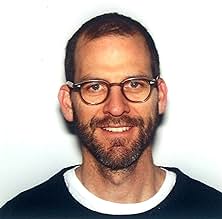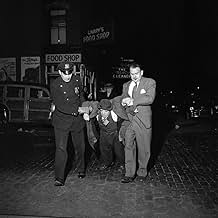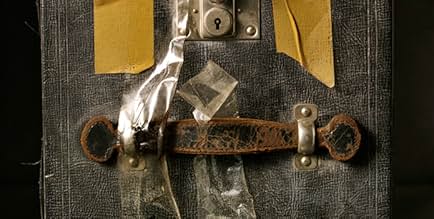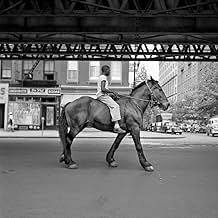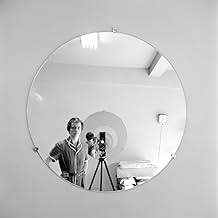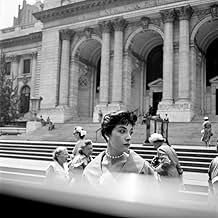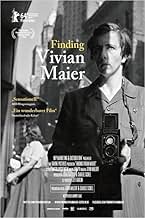PUNTUACIÓN EN IMDb
7,7/10
15 mil
TU PUNTUACIÓN
Añade un argumento en tu idiomaA documentary on the late Vivian Maier, a nanny whose previously unknown cache of 100,000 photographs earned her a posthumous reputation as one of the most accomplished street photographers.A documentary on the late Vivian Maier, a nanny whose previously unknown cache of 100,000 photographs earned her a posthumous reputation as one of the most accomplished street photographers.A documentary on the late Vivian Maier, a nanny whose previously unknown cache of 100,000 photographs earned her a posthumous reputation as one of the most accomplished street photographers.
- Nominado para 1 premio Óscar
- 12 premios y 23 nominaciones en total
Vivian Maier
- Self
- (metraje de archivo)
Jeffrey 'Guffy' Levant
- Self - Interview Subject
- (as Jeffrey 'Duffy' Levant)
Argumento
¿Sabías que...?
- ConexionesFeatured in The Oscars (2015)
Reseña destacada
Though we know very little about some of the great artists of the past, many say that it is not important because we have the works. Yet the world still longs for knowledge about the living, breathing human being, the man or woman behind the name on the painting or the title page. This element of mystery is what makes John Maloof and Charlie Siskel's documentary Finding Vivian Maier so intriguing, yet also leaves us wanting to know more. The subject of the film is an unknown photographer whose art has been compared to the masters, though she never exhibited her work and little is known about her life.
The photos, discovered by Maloof, display a segment of society invisible to many in the 1950s - the old, the poor, the black, the young, and the disenfranchised, a kaleidoscope of stunning images that poignantly capture the faces of humanity with humor and rare sensitivity. The story begins with John Maloof reporting how he purchased a box of negatives at an auction in Chicago in 2007 for a book he was working on. Told that the photographs were by Vivian Maier, he did not recognize the name and could find nothing about her on Google. After stashing the box away for two years, Maloof decided to scan some images and post them on Flickr.
Writing on the website that he had about 30,000 negatives of Maier's work that cover a period ranging from the 1950s to the 1970s, he requested direction, asking whether the photos are worthy of an exhibition or a book. Shortly after that, an article appeared in a British newspaper and the Chicago Cultural Center presented an exhibition of her work in 2011. Kickstarter provided the funding and this documentary began to take shape. Still digging for more information, the second half of the film is devoted to discoveries the director made about Maier and they are not all pretty.
What we do know is that Maier was born in 1926 and spent some time in France before working as a nanny for upper middle class families in the Chicago suburbs (including a brief time with Phil Donahue). Always dressed in an old-fashioned suit, Maier would walk through streets and alleys with the children she cared for, snapping black and white photographs with her Rolleiflex camera that she held down by her waist. Interviews with past employers and grown children, though often contradictory, reveal a private but very complex individual with strong opinions that she did not hesitate to share. They also indicate that she had a dark side and her reported bizarre behavior may have indicated serious emotional problems.
There are also stories about her room being filled with newspaper as high as the ceiling, that she used a fake French accent (though some do not recall any accent at all), and changed her name with each family she worked for, often giving phony names. One woman remembered that Maier told her that she was "sort of a spy." Some of those interviewed have more upsetting memories about coercion and bullying, but the film does not dwell on them, nor provide anyone to either counter or corroborate them. We do learn, however, that when Vivian was much older, two of the children she cared moved her into an apartment and finally into a nursing home where she died in 2009.
Unfortunately, neither of these loving children was interviewed, leaving a tantalizingly vague idea of who she really was. Though admittedly he has a commercial interest in its promotion, Maloof has done a public service by making the world aware of the work of this great artist and has been willing to spend an enormous amount of time and money in the process. Though this has resulted in her work now being displayed in galleries all over the world, the question of why her photographs have not been accepted by the Museum of Modern Art is left unexplored.
The bigger mystery - why she chose to withhold the photos from the world, of course, is still unknown and the film sheds very little light on this puzzle. Like last year's Searching for Sugar Man, a documentary about Sixto Rodriguez, another unknown but very talented artist, Finding Vivian Maier is a fascinating ride. Unlike Rodriguez, however, Vivian Maier will never hear the applause.
The photos, discovered by Maloof, display a segment of society invisible to many in the 1950s - the old, the poor, the black, the young, and the disenfranchised, a kaleidoscope of stunning images that poignantly capture the faces of humanity with humor and rare sensitivity. The story begins with John Maloof reporting how he purchased a box of negatives at an auction in Chicago in 2007 for a book he was working on. Told that the photographs were by Vivian Maier, he did not recognize the name and could find nothing about her on Google. After stashing the box away for two years, Maloof decided to scan some images and post them on Flickr.
Writing on the website that he had about 30,000 negatives of Maier's work that cover a period ranging from the 1950s to the 1970s, he requested direction, asking whether the photos are worthy of an exhibition or a book. Shortly after that, an article appeared in a British newspaper and the Chicago Cultural Center presented an exhibition of her work in 2011. Kickstarter provided the funding and this documentary began to take shape. Still digging for more information, the second half of the film is devoted to discoveries the director made about Maier and they are not all pretty.
What we do know is that Maier was born in 1926 and spent some time in France before working as a nanny for upper middle class families in the Chicago suburbs (including a brief time with Phil Donahue). Always dressed in an old-fashioned suit, Maier would walk through streets and alleys with the children she cared for, snapping black and white photographs with her Rolleiflex camera that she held down by her waist. Interviews with past employers and grown children, though often contradictory, reveal a private but very complex individual with strong opinions that she did not hesitate to share. They also indicate that she had a dark side and her reported bizarre behavior may have indicated serious emotional problems.
There are also stories about her room being filled with newspaper as high as the ceiling, that she used a fake French accent (though some do not recall any accent at all), and changed her name with each family she worked for, often giving phony names. One woman remembered that Maier told her that she was "sort of a spy." Some of those interviewed have more upsetting memories about coercion and bullying, but the film does not dwell on them, nor provide anyone to either counter or corroborate them. We do learn, however, that when Vivian was much older, two of the children she cared moved her into an apartment and finally into a nursing home where she died in 2009.
Unfortunately, neither of these loving children was interviewed, leaving a tantalizingly vague idea of who she really was. Though admittedly he has a commercial interest in its promotion, Maloof has done a public service by making the world aware of the work of this great artist and has been willing to spend an enormous amount of time and money in the process. Though this has resulted in her work now being displayed in galleries all over the world, the question of why her photographs have not been accepted by the Museum of Modern Art is left unexplored.
The bigger mystery - why she chose to withhold the photos from the world, of course, is still unknown and the film sheds very little light on this puzzle. Like last year's Searching for Sugar Man, a documentary about Sixto Rodriguez, another unknown but very talented artist, Finding Vivian Maier is a fascinating ride. Unlike Rodriguez, however, Vivian Maier will never hear the applause.
- howard.schumann
- 18 ago 2014
- Enlace permanente
Selecciones populares
Inicia sesión para calificar y añadir a tu lista para recibir recomendaciones personalizadas
- How long is Finding Vivian Maier?Con tecnología de Alexa
Detalles
- Fecha de lanzamiento
- País de origen
- Sitios oficiales
- Idiomas
- Títulos en diferentes países
- Finding Vivian Maier
- Localizaciones del rodaje
- Empresa productora
- Ver más compañías en los créditos en IMDbPro
Taquilla
- Recaudación en Estados Unidos y Canadá
- 1.514.782 US$
- Fin de semana de estreno en EE. UU. y Canadá
- 63.600 US$
- 30 mar 2014
- Recaudación en todo el mundo
- 2.385.956 US$
- Duración1 hora 23 minutos
- Color
- Relación de aspecto
- 1.85 : 1
Contribuir a esta página
Sugerir un cambio o añadir el contenido que falta

Principal laguna de datos
By what name was Buscando a Vivian Maier (2013) officially released in India in English?
Responde





